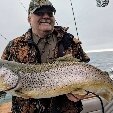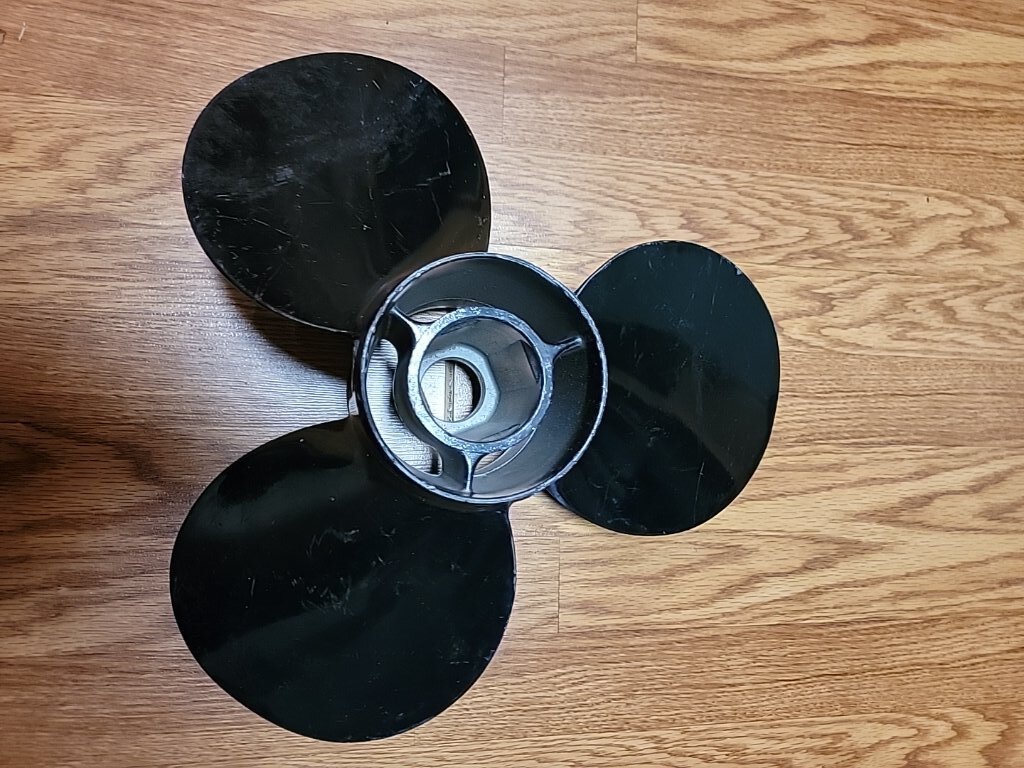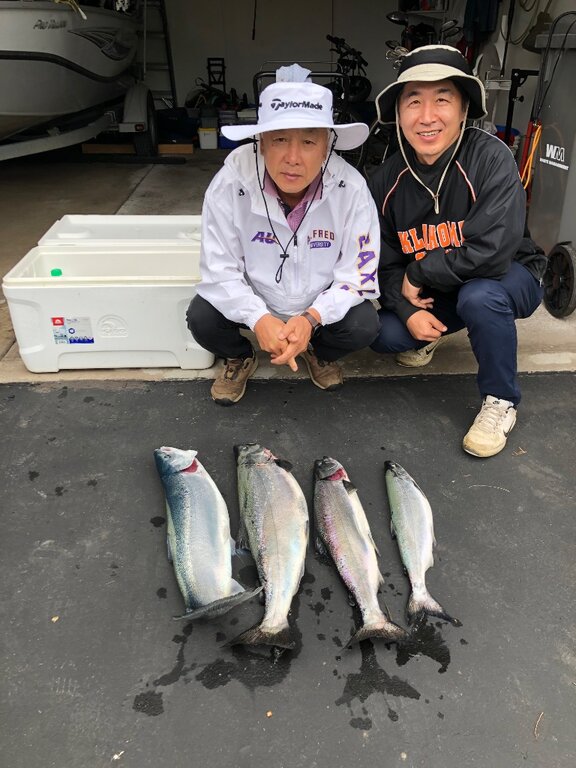-
Posts
325 -
Joined
-
Last visited
Content Type
Profiles
Forums
Events
Gallery
Store
Everything posted by VooDoo
-
I have the Lowrance Active Target. You can mount the transducer on a movable pole virtually anywhere on the boat that let's you point the transducer where you want. You can then remove the pole from the mount when you're under power.
-

for sale : usa 1995 Force 120 parts.
VooDoo posted a topic in Classifieds - Buy, Sell, Trade or Rent
I blew my 1995 Force 120 motor. This motor was manufactured by Mercury. I have lots of good parts. Will work with some other year models. Cowl, carbs, 2 starters, too many parts to list. If you need something let me know and I can post some pics.] -

for sale : usa Mercury Black Max 16x16p prop
VooDoo replied to VooDoo's topic in Classifieds - Buy, Sell, Trade or Rent
-

for sale : usa Mercury Black Max 16x16p prop
VooDoo posted a topic in Classifieds - Buy, Sell, Trade or Rent
-

Looking for info out of Oak
VooDoo replied to Ric66's topic in New York Fishing Reports - Lake Ontario (South Shore)
I fished last weekend and a lot of things can change but 60 down water was 44 degrees. 300 copper with meat never moved. May have taken one shot on meat wire diver and one shot on flasher fly. Rest on spoons. Sliders on riggers did well. 200 weighted steel, 7 color and 10 color did well. Slide diver took our biggest king (about 20#) down around 35 ft. 80 to 220 fow. Mostly steelhead out and kings in. Good luck -

western basin advice
VooDoo replied to Big Tom's topic in New York Fishing Reports - Lake Ontario (South Shore)
Fished out of the Oak Thursday evening thru Saturday. Had decent temps Thurs and Fri. Slow pick on 2 yr old kings and steelhead but enough to keep it interesting. Sat. Warm water moved in 60 degrees surface down to 60 feet clear out to 350 fow. Didn't go much deeper. Rough lake. Very few fish. Had 3 quick hits early 130 to 160 fow but couldn't keep them on. Only managed 2 steelhead rest of the day. Took one good shot on deep diver with meat, no hook up A couple on high slide divers with spoons. Riggers down 44 and 58 with spoons. And 10 color core took fish. Mainly all spoon bite. Best water was prob 300 to 350 when temps were good May be ok if cooler water moves back in. Good luck -

Downrigger Backlash
VooDoo replied to Just1skipper2's topic in Questions About Trout & Salmon Trolling?
That's true with the cone angles. With the humminbird ducer tilted up a little it points back a little further.. thus showing the weights better. But it doesn't show how far the weight is from the back of the boat. if I really want to see how far the ball is behind the boat I can point the lowrance active target transducer to the rear. This will show exactly where the ball is and show depth as well, although I'm not sure how accurate the depth reading is. It does show quite shallower than the 2d sonar shows. But I have to subtract the length of the boat since that transducer is in the bow. -

Downrigger Backlash
VooDoo replied to Just1skipper2's topic in Questions About Trout & Salmon Trolling?
I was referring to the difference between what the humminbird transducer and lowrance transducer showed for bottom depth because I have the back of the humminbird ducer tilted up a little. I can see the rigger weights better but also can see bottom depth on plane better. I understand blowback and realize that what sonar shows is not actual depth of ball. I do know that if the ball doesn't show on sonar I have to let a signicant amount more cable out -

Downrigger Backlash
VooDoo replied to Just1skipper2's topic in Questions About Trout & Salmon Trolling?
Heavier weights have less blowback. U can also tilt the back of your tranducer up a little, but this may make your depth reading off slightly. I run a Lowrance carbon and humminbird helix with the ducer tipped up a little. The helix picks up weights a little better. There is about a 2' difference in depth between the two. -

Downrigger Backlash
VooDoo replied to Just1skipper2's topic in Questions About Trout & Salmon Trolling?
I think you are referring to blowback. There are too many variables to give you definite answers. The lighter the weights, the more blowback. The deeper you send them, the more blowback. Speed, current, etc are all factors. -
Thanks for the reply. Are you releasing your inlines so they dont keep planing or leaving them attached with a release like a lock jaw or snapper when you bring them in?
-
I run both inline and big boards. Have no issues with multiple lines of same length or short leads. Multiple long lines per side are where I have problems. To save the headaches I now just run a 300 copper on one side and a 10 color core on the other. Would like to try 2 long lines per side. 300 copper and 200 weighted steel and a 10 color and 5 or 7 color. Theoretically the 300 copper and 10 color should be on the inside since they are deeper but my question is how do you reset an outside line and get it around the inside line without clearing the inside line? Either with inlines or big boards.
-
I'm using 65lb braid as backing. Dont know if it will slip out of the original pinch pad if the pad is turned around. Even if I wrap it a couple times around the release
-
Thanks, I'll try that before getting replacement releases.
-

Adding snap weights to copper.
VooDoo replied to VooDoo's topic in Questions About Trout & Salmon Trolling?
I do have speed and temp. Have added offshore guppy weights to leadcore with good results. Know it got deeper but just don't know how much. Was trying to figure out how to get a 300 copper deeper. . -
The release that comes on the TX 44 is a pinch pad type that actually faces towards the board so the line will not release. I really like the 44s cause they pull hard and don't drag back with the heavier long lines, like some other boards. I guess I could change releases.
-
Anyone have a guess as to how much more depth you can get by adding 1, 2, or 3 oz. Snap weights to the leader on a 300 copper, with a speed approx 2.5 at depth.?
-
I've been using TX 44 inline boards for pulling 300 copper and 10 color leadcore. Been having issues with the board diving while reeling in a fish. I realize you have to release the bail immediately till the board resurfaces but most of the problem is with newbies on the boat. They want to haul back on the rod, even though I try to warn them ahead of time. Lost several 300 coppers and meet rigs. Gets pricey after awhile. Any one have any suggestions to keep the board from diving?
-

Wanted Navionics Hot Maps Premium East
VooDoo replied to Wolf's topic in Classifieds - Buy, Sell, Trade or Rent
PM sent. -

Sold / Closed 2 BRAND NEW SPOOLS of DIPSY WIRE LINE ,30 LB. TEST
VooDoo replied to emtystringer's topic in Classifieds - Buy, Sell, Trade or Rent
-

Sold / Closed 2 BRAND NEW SPOOLS of DIPSY WIRE LINE ,30 LB. TEST
VooDoo replied to emtystringer's topic in Classifieds - Buy, Sell, Trade or Rent
-

Scotty Release Tension
VooDoo replied to Just1skipper2's topic in New York Fishing Reports - Lake Ontario (South Shore)
Actually you can cut the wire off of the Black's and put it directly on the Downrigger cable. Secure it where you want it with a couple of Scotty beads. I run mine approx 12 to 18" above my probe. -

Sub troll
VooDoo replied to SHOOTER544's topic in New York Fishing Reports - Lake Ontario (South Shore)
If you are using 15 lb weights your probe is probably running true. Altho with blow back it is probably only running 70 ft instead of 80. (Strictly a guess). Having to run 4.7 to maintain 2.1 is pretty common. I've actually had to almost max out my 9.9 kicker to maintain 2.5. There are just too many variables to lock this down to one scenario. Current, waves and wind throw too many curveballs. Adjust your speed frequently and keep an eye on your downspeed. When u catch a fish. Note what the down speed was and then duplicate that. -

Sub troll
VooDoo replied to SHOOTER544's topic in New York Fishing Reports - Lake Ontario (South Shore)
STW is the boat speed relative to the water. It is picked up by a paddle wheel sensor. SOG is the speed of the vessel relative to the earths surface. Unless it is dead calm with no current the 2 will rarely read the same. It's possible for the SOG to read 5 mph and STW to read 0 if the boat is in a 5 mph current. My Moor probe set at about 18" reads very similar to my STW, until you drop it to fishing depth and then it could remain the same or change depending on current at depth. Hope this helps.




